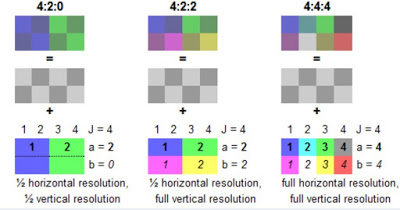
History of HDMI: In the Beginning
Tuesday, July 7, 2015 8:50:46 PM America/New_York
By C. I. Source
Although HDMI® 2.0 has been out for a while, this technology still has a dark shroud of mystery surrounding it. Dealers and manufactures are afraid of HDMI while customer demand is looming. We’ll examine some of the issues we’ve had to deal with as we get underway with this new frontier in Part 1. Be sure to watch for Part 2, Into the Future of HDMI in our next installment.
The question is: “As an industry, how do we salve the fears and provide the client with what they need to move forward with the new HDMI interface?”
To fully understand the new technology, let’s review. Let’s look at how we evolved, where we are presently, and where we are headed in the future:
In the beginning, there was DVI created by silicon image which was intended to be a computer video interface that provided a true Digital High Speed Video connection over a relatively short distance. DVI performed as intended — but not without problems creating a roadblock to future implementation. Some of the issues were the lack of a single Plug/Wire standard; the inability for the signal path to travel more than 15’ consistently; no audio standard; and a very large terminal.
Not long after DVI was introduced, the movie and TV industries started looking for ways to secure their new “HD” content. They felt motivated by and ultimately compelled to limit market availability due to what they assumed were their intellectual property rights. They would not release “HD” content to without a strict level of “Intellectual Property” protection. To fix this shortcoming, Silicon Image (creator of DVI) took the functioning structure of DVI and the HDCP protection scheme developed by Intel and put it all together into a smallish terminal that carried the High Speed Video, Multi-Channel Audio, Intelligence and Security together as one.
The original HDMI Spec 1.0, 1.1 and 1.2 (2002-2006) allowed for 5 Gbps of data transfer, this supported 1080P, 8 Bit color, Multi-channel Audio and EDID/HDCP. In 2006 the HDMI 1.3 spec was released, this covered several new features and an expanded bandwidth of 10.2 Gbps. This revision had the first actual cable performance change (from 5 to 10 Gbps) since the introduction of HDMI and is where we still are almost 10 years later! The HDMI 1.4 spec introduced in 2009 added features to the electronics but did not have any cable changes except for the “not yet used” Ethernet support.
This brings us to HDMI 2.0 and the new 18 Gbps standard. When HDMI 2.0 was introduced with much Fanfare in September of 2013 (wow time flies!) there was a lot of misunderstanding and misinformation. This new version of HDMI made a giant leap in bandwidth and now calls for 18 Gbps bandwidth capability.
Whoa… wait a minute, did not HDMI LLC say that they would not need to institute a new cable spec to support this? Yes, HDMI stated, numerous times, that the current 1.4 “high end” cable spec will do everything that is needed for this new format.
And that brings us to the reason for this article: How is this going to work? More importantly, how do we plan for the future?
Here (in HDMI LLC’s opinion) is how it is supposed to work:
Equalization! HDMI assumes that if you have a “true” High Speed cable that is in fact capable of 10.2 Gbps and if you can throw 25 db of EQ onto the signal at the display side you will be able to recover enough data to get a “true” UHD 4K picture.
There are of course some serious issues involved with this plan. A vast number of cables are not really 10.2 capable, even though they are rated high speed. That means a fail. The display side equalization, while over-all adaptive, does not appear to be frequency specific adaptive. This means that if your cable does not have a very linear signal loss between 10 Gbps and 18 Gbps (with a max loss of 25 db) you will have a statistically high opportunity of failure. This theory also does not work well with longer distances and extenders, of any sort.
Here (IMO) is how it is working:
How is it that there are systems with long cables and extenders working with UHD right now? Well, they really aren’t doing HDMI 2.0.
HDMI 2.0, more importantly UHD, only needs about 9 Gbps to carry all of the current formats. I call this HDMI 2.0 Lite.
Aren’t UHD and HDMI 2.0 the same thing? No, no they are not. Thinking of the HDMI 2.0 spec as the USA, for example, UHD is about the size of Rhode Island! So while all UHD formats fit into the HDMI 2.0 Spec, and as a general rule the HDMI 1.4 spec, there is no way that all of the HDMI 2.0 features fit inside the boundaries of UHD.
Here is how current UHD 4K/60 works inside of the HDMI 1.4 spec:
Current UHD started showing up in products such as the Sony 4K server in the summer of 2013. This version was only 4K/30 meaning the picture was refreshed 30 frames per second (FPS.) While this looked great on static or slow moving pans, when there was an action scene the video became very jittery. This did not go over well with the consumer. The push was on to get the video refresh rate up to 60 FPS. The only way to accomplish this with the cables and digital roadways that are available is to cut corners on the “chroma sub-sampling rate.” This Chroma sub-sampling rate is represented as three numbers, 4:4:4, 4:2:2 and 4:2:0. This is very important to both the overall quality of the picture and the bandwidth needed to carry the signal. 4:2:0, available in UHD, cuts down on the necessary bandwidth by doing a lot of data averaging. This is done so they can cram a lot of data, in theory, into a small pipe. In 4:4:4 each and every pixel can display any color independent of any other pixel. In the 4:2:0 pixels are arranged in groups of 4 which all show the same color. This is how they cut down on bandwidth, instead of needing enough bandwidth to provide every pixel its own color information, they now only need enough to cover a quarter of that need.

That’s enough for this issue, don’t you agree? Stay tuned for Part 2: The Future of HDMI in our next issue.
Be sure to send me your questions and any feedback you may have. I’d love to hear from you!











